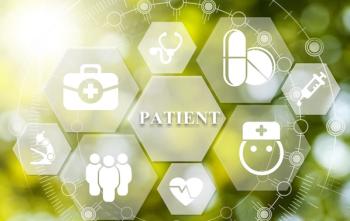
- Applied Clinical Trials-09-01-2018
- Volume 27
- Issue 9
The Future of Mobility and Medicine
The role of the cloud in realizing the practical benefits of mHealth in clinical trials.
The phones we now carry have changed the way we connect with one another, find our way around, and decide where to have dinner or buy a movie ticket. The way we operate our homes has changed, too, whether it is turning on the alarm or adjusting the thermostat while we’re away. Our connected cars, using GPS, stream our favorite tunes while we make our way through a smart city. This is the “Internet of Things,” and it is becoming just as pervasive in the world of clinical trials. Call it the “Internet of Clinical Things”-which is rooted in mHealth, where mobility and medicine meet.
Ninety-four percent of pharmaceutical companies, contract research organizations (CROs), and service providers plan to increase their use of mHealth, according to research from KNect365. Why is that and what will it look like? Here are some possibilities.
1. Drugs are expensive to develop, but mHealth could bring the cost down
It takes more than a decade to advance a new drug to market, and an average cost of $2.5 billion, according to the Pharmaceutical Research and Manufacturers of America (PhRMA). Historically, clinical R&D consisted of many disjointed processes supported by isolated eClinical point solutions. The challenge with this scenario is that these solutions don’t share data, processes, or validation, requiring study teams to re-enter data and treat each step in a clinical trial as an independent trial, versus a piece of a single, unified study. This “old way” protracts the development and approval of potentially life-saving drugs that could help patients waiting in need.
The rise of mHealth technologies, including mobile sensors, patient engagement apps, and telemedicine are reshaping the way clinical trial data is collected and could improve the efficiency of studies when combined with the cloud. The FDA approved AliveCor’s Kardiaband, the medical device accessory for the Apple Watch. MC10, FitBit, Validic, CMT, MIR, Nonin, A&D Medical, and Possible Mobile are making important innovations to support mHealth. Streaming data from these and other eSources into a secure, central cloud-computing environment that intelligently interprets, aggregates, and distributes clinical data to clinical systems will give all trial stakeholders access to consistent and current participant information.
Gathering data in novel ways with mHealth, and storing it in the cloud, sharply reduces steps necessary to access data and better understand the safety and efficacy of investigational drugs. As a result, the industry can bend the cost curve down with mHealth.
Patient recruitment is a persistent problem in clinical research. Many research centers are challenged to find and enroll sufficient numbers of clinical study participants, according to the Tufts Center for the Study of Drug Development (CSDD). Prospective participants, as well as their primary care doctors, remain unaware of the various clinical trials that are being conducted. Tapping into cloud data produced by mHealth sensors, including genetic information, could help find potential matches. In particular, being able to correlate biomarkers with physiological data could help identify a large enough population for a trial rapidly, in contrast to traditional methods, which could take years or not work at all.
2. Geography traditionally stands in the way, though mHealth could make trial locations agnostic
Once they are enrolled in a trial, it’s vital that patients adhere to the requirements-dosage amounts, frequency, and under what circumstances. Ensuring that compliance is the difference between a patient whose results can be used in the study, and a patient whose results have to be discarded, costing the individual time and the sponsor/CRO time and money. A pill bottle sensor cap is an example of mHealth, in that it can generate data to provide evidence that patients did what they were expected to do.
Even if they are willing to take their medicine on time, many patients will quit a trial before it is completed (or never sign up at all) because of the associated travel and time commitments. mHealth technologies such as heart rate sensors, blood pressure devices, and even electronic diaries have led to the creation of so-called “site-less” trials that can make it much easier for patients to participate.
Conventional clinical trials require participants to travel to research centers on a regular basis for screening, to receive treatments, and for monitoring how they are responding to the investigational drug. The process includes routine screenings like blood tests, X-rays, or other diagnostics. In many cases, patients live two or more hours from the nearest research site, forcing them to disrupt their normal schedule, perhaps several times a month. It’s this commitment that often compels patients to opt out of a trial.
With site-less trials, assessment and monitoring could occur in a patient’s home or at a local clinic or hospital, where data captured via a device could be sent directly to the cloud for access by the site and clinical coordinators. Mobile devices would provide researchers with additional real-time, detailed data on patients between clinical visits as well, which can provide more information for researchers. For example, patients who are stressed by a long car ride to a site, and by the surroundings, may exhibit hypertension during their visit, possibly leading researchers to conclude it is a side effect of the medicine. But at home, without that stress, a sensor could show normal blood pressure. With the data in the cloud, clinical trial coordinators not only can keep a close watch on progress from afar, they also can analyze the data to tell the difference between a true side effect and an anomalous reading. That same adverse event (AE) data stored in the cloud can then be accessed by AE teams to comply with FDA reporting requirements.
MHealth, combined with the cloud, gives therapeutic teams a new opportunity to meet enrollment targets, options to gather data, and tools to improve adherence to study protocols. If we are able to expand the number of patients by expanding to more geographic regions, we have the power to increase the number of trials and, therefore, the possibility of bringing more life-saving therapies to market faster.
3. Evidence is required to prove the treatment works, and give more back to the patient
Data transformation and semantic interoperability-converting raw data into submission-ready data sets-are vital pieces of any clinical trial that will leverage mHealth and the cloud. Once that obstacle is addressed, artificial intelligence (AI), natural language processing, and machine learning hold great promise.
For example, AI is deeply valuable in detecting safety issues earlier and understanding causes, cross-referencing diverse data sources to understand variables that could be related to a bad drug reaction. For instance, a patient’s drug adherence, activity and stress levels, sleep patterns, or diet could be combined with clinical data such as blood pressure or glucose levels. Location information could be cross-referenced with local temperatures, air quality, or allergens present-factors that could prove important in the final analysis. The more complete a picture of the patient, by leveraging mHealth, the more likely AI will be able to generate important insights about factors that might affect how a treatment performs. Additionally, with mHealth, it is no longer a point in time when a patient checks into a labsite; it can be a continuous flow of cross-referenced data.
All this information and insight enables another critical change in clinical trials: making them more patient-centric. Traditionally, clinical trials are one-way affairs, where patients provide valuable data to researchers, but little information flows back to the subject. Now it’s possible to provide patients with insights into their own health, recommendations on changes they can make to improve it, and help in managing the condition or disease that led to their selection for the trial in the first place. This same technology can be used later to help individual practitioners become better able to serve their patients through monitoring how well they are following a treatment protocol, or by the biopharma companies themselves as part of the post-trial pharmacovigilance process.
mHealth is an integral piece of the clinical trial operational hub
If there’s any hurdle to building this digital future for clinical research, it’s not about what the technology can do but how it has been implemented. Many companies have taken an approach over the years that has resulted in siloed systems that make it difficult to link and share clinical data with different parts of the process and different teams involved in the study. Additionally, many clinical trials have been designed around systems purpose-built for a single disease or disease state that are difficult or expensive to use for other types of studies.
What we see happening now in the eClinical space is this movement to a unified eClinical environment that provides an operational hub where all the clinical data is collected-through mHealth and by other means-and analyzed and shared via dashboards and tools that are needed for a specific trial. The goal of this movement is to break down these system-created virtual silos to keep patient data unified in a single place, and provide access to the data by all relevant parties. Rather than force therapeutic teams to wait months or even years for IT to integrate a new sensor or data stream into an in-house platform, the new eClinical environments empower investigators to add new technology easily and quickly to their work, taking advantage of innovation in a timely fashion.
Making these advances practical will depend on a robust and flexible cloud infrastructure that serves as both a repository for the immense amounts of data involved as well as for the tools and intelligence to analyze that information. It also will require changes across life sciences-new roles, standards, and skills will be needed. Regulators will need to adapt legacy processes to accommodate the accelerated pace made possible by mHealth innovation. In addition, privacy and security concerns will have to be addressed in ways that make patients comfortable with providing the data and give enterprises incentives to collaborate.
Ultimately it is about empowering therapeutic teams to embrace new digital approaches that can bring effective life-changing therapies to market, which is the goal we all share.
Jonathan Palmer is Senior Director, Product Strategy, Digital Trials, Oracle Health Sciences
Articles in this issue
over 7 years ago
Greater Gift's PopUp Star Eventover 7 years ago
Can FDA Put Some Heat Back Under European Adaptive Pathways?over 7 years ago
Next-Generation Clinical Trialsover 7 years ago
Clinical Trials In a Dish: A Revolution Beginsover 7 years ago
EU’s Status on IDMPover 7 years ago
Applied Clinical Trials, September 2018 Issue (PDF)over 7 years ago
Ensuring High-Quality Data in Complex, In-Home Clinical Trialsover 7 years ago
FDA Promotes Surrogate Endpoints, ‘Seamless’ Clinical Trialsover 7 years ago
Q&A: Clinical Trials Need To Grow In RelevanceNewsletter
Stay current in clinical research with Applied Clinical Trials, providing expert insights, regulatory updates, and practical strategies for successful clinical trial design and execution.




